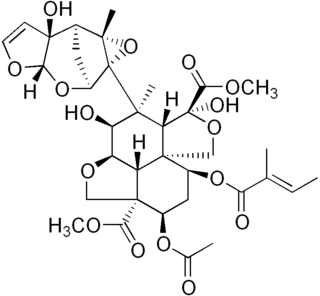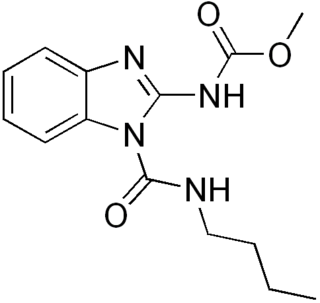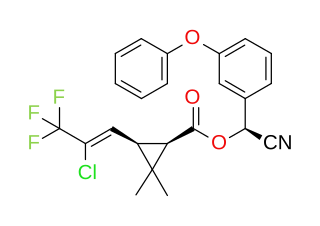
Pesticides are substances that are meant to control pests. The term pesticide includes all of the following: herbicide, insecticides nematicide, molluscicide, piscicide, avicide, rodenticide, bactericide, insect repellent, animal repellent, antimicrobial, and fungicide. The most common of these are herbicides which account for approximately 80% of all pesticide use. Most pesticides are intended to serve as plant protection products, which in general, protect plants from weeds, fungi, or insects. As an example - The fungus Alternaria is used to combat the Aquatic weed, Salvinia.

Insecticides are substances used to kill insects. They include ovicides and larvicides used against insect eggs and larvae, respectively. Insecticides are used in agriculture, medicine, industry and by consumers. Insecticides are claimed to be a major factor behind the increase in the 20th-century's agricultural productivity. Nearly all insecticides have the potential to significantly alter ecosystems; many are toxic to humans and/or animals; some become concentrated as they spread along the food chain.

Azadirachtin, a chemical compound belonging to the limonoid group, is a secondary metabolite present in neem seeds. It is a highly oxidized tetranortriterpenoid which boasts a plethora of oxygen-bearing functional groups, including an enol ether, acetal, hemiacetal, tetra-substituted epoxide and a variety of carboxylic esters.

Triclopyr is an organic compound in the pyridine group that is used as a systemic foliar herbicide and fungicide.

An agrochemical or agrichemical, a contraction of agricultural chemical, is a chemical product used in agriculture. In most cases, agrichemical refers to pesticides including insecticides, herbicides, fungicides and nematicides. It may also include synthetic fertilizers, hormones and other chemical growth agents, and concerntrated stores of raw animal manure.

Pyrazolopyrimidines are a series of isomeric heterocyclic chemical compounds with the molecular formula C6H5N3. They form the central core of a variety of more complex chemical compounds including some pharmaceuticals and pesticides.
Biopesticides, a contraction of 'biological pesticides', include several types of pest management intervention: through predatory, parasitic, or chemical relationships. The term has been associated historically with biological pest control – and by implication, the manipulation of living organisms. Regulatory positions can be influenced by public perceptions, thus:

The oligodynamic effect is a biocidal effect of metals, especially heavy metals, that occurs even in low concentrations.

Benzimidazole fungicides are a class of fungicides including benomyl, carbendazim (MBC), thiophanate-methyl, thiabendazole and fuberidazole. They can control many ascomycetes and basidiomycetes, but not oomycetes. They are applied to cereals, fruits, vegetables and vines, and are also used in postharvest handling of crops.
In agriculture and horticulture, seed treatment or seed dressing is a chemical, typically antimicrobial or fungicidal, with which seeds are treated prior to planting. Less frequently, insecticides are added. Seed treatments can be an environmentally more friendly way of using pesticides as the amounts used can be very small. It is usual to add colour to make treated seed less attractive to birds, and easier to see and clean up in the case of an accidental spillage. Specialist machinery is required to safely and efficiently apply the chemical to the seed. A seed coating is a thicker form of covering of seed and may contain fertiliser, growth promoters and or seed treatment as well as an inert carrier and a polymer outer shell. The term "seed dressing" is also used to refer to the process of removing chaff, weed seeds and straw from a seed stock.

Azoxystrobin is the ISO common name for an organic compound that is used as a fungicide. It is a broad spectrum systemic active ingredient widely used in agriculture to protect crops from fungal diseases. It was first marketed in 1996 using the brand name Amistar and by 1999 it had been registered in 48 countries on more than 50 crops. In the year 2000 it was announced that it had been granted UK Millennium product status.

Cyhalothrin is the ISO common name for an organic compound that, in specific isomeric forms, is used as a pesticide. It is a pyrethroid, a class of synthetic insecticides that mimic the structure and properties of the naturally occurring insecticide pyrethrin which is present in the flowers of Chrysanthemum cinerariifolium. Pyrethroids such as cyhalothrin are often preferred as an active ingredient in agricultural insecticides because they are more cost-effective and longer acting than natural pyrethrins. λ-and γ-cyhalothrin are now used to control insects and spider mites in crops including cotton, cereals, potatoes and vegetables.

Emamectin is the 4”-deoxy-4”-methylamino derivative of abamectin, a 16-membered macrocyclic lactone produced by the fermentation of the soil actinomycete Streptomyces avermitilis. It is generally prepared as the salt with benzoic acid, emamectin benzoate, which is a white or faintly yellow powder. Emamectin is widely used in the US and Canada as an insecticide because of its chloride channel activation properties.

Tefluthrin is the ISO common name for an organic compound that is used as a pesticide. It is a pyrethroid, a class of synthetic insecticides that mimic the structure and properties of the naturally occurring insecticide pyrethrin which is present in the flowers of Chrysanthemum cinerariifolium. Pyrethroids such as tefluthrin are often preferred as active ingredients in agricultural insecticides because they are more cost-effective and longer acting than natural pyrethrins. It is effective against soil pests because it can move as a vapour without irreversibly binding to soil particles: in this respect it differs from most other pyrethroids.

Ethiofencarb is a carbamate insecticide which is useful in controlling aphids on hard and soft fruits and some vegetables. It is not as dangerous as organophosphorous pesticides, but is considered highly toxic to humans in the UK, moderately toxic under US EPA classification, and highly toxic to aquatic life.

Bupirimate is an active ingredient of plant protection products, which has an effect as a fungicide. It belongs to the chemical family of pyrimidine sulfamates. Bupirimate has translaminar mobility and systemic translocation in the xylem. It acts mainly by inhibiting sporulation and is used for control of powdery mildew of apples, pears, stone fruit, cucurbits, roses and other ornamentals, strawberries, gooseberries, currants, raspberries, hops, beets and other crops. Bupirimate is not an insecticide. It is of low mammalian toxicity and is non-toxic to bees. However, it is used in many products which also contain insecticides.
Early twenty-first century pesticide research has focused on developing molecules that combine low use rates and that are more selective, safer, resistance-breaking and cost-effective. Obstacles include increasing pesticide resistance and an increasingly stringent regulatory environment.

Oxycarboxin is an organic compound used as a fungicide. It is an anilide.
Garlic oil is the volatile oil derived from garlic. It is usually prepared using steam distillation, and can also be produced via distillation using ether. It is used in cooking and as a seasoning, a nutritional supplement, and also as an insecticide.
















